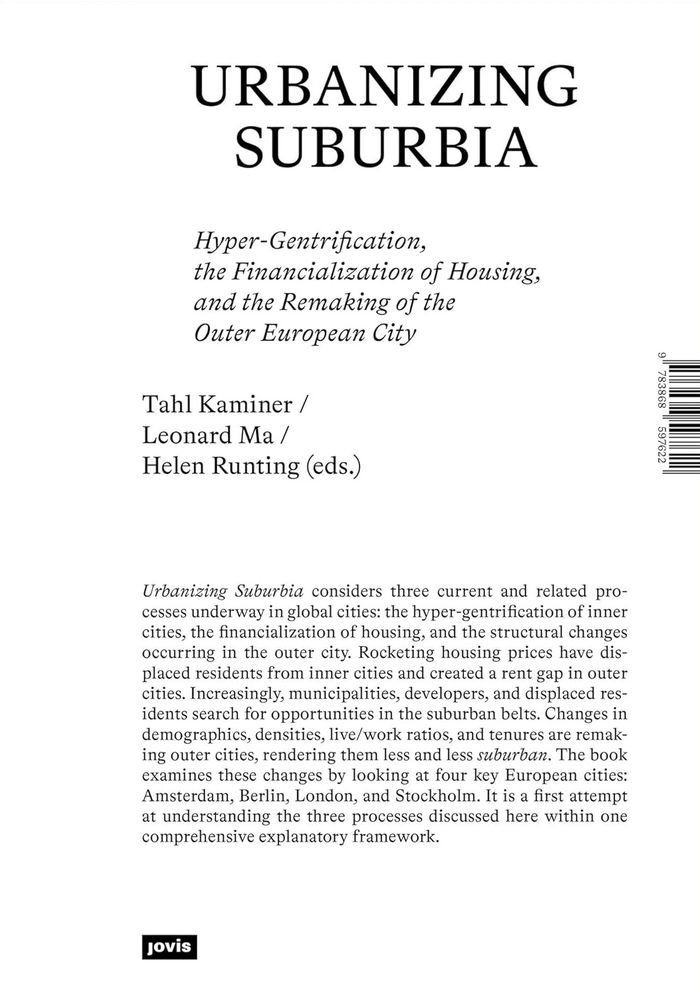$49.95
(disponible en magasin)
Résumé:
''Urbanizing suburbia'' considers the relationship between three current processes underway in global cities: the hyper-gentrification of inner cities, the financialization of housing, and the structural changes occurring in the suburbs. The rocketing price of housing in cities around the world has led to a sizable exodus of residents from the inner cities, with many of(...)
Urbanizing suburbia: Hyper-gentrification, the financialization of housing and the city
Actions:
Prix:
$49.95
(disponible en magasin)
Résumé:
''Urbanizing suburbia'' considers the relationship between three current processes underway in global cities: the hyper-gentrification of inner cities, the financialization of housing, and the structural changes occurring in the suburbs. The rocketing price of housing in cities around the world has led to a sizable exodus of residents from the inner cities, with many of those displaced settling in the suburban belts. This change in demographics, coupled with specific regeneration strategies implemented by municipalities, is leading to a remaking of suburbia. The book examines these changes using the examples of four key global European cities: Amsterdam, Berlin, London, and Stockholm. It is a first attempt at understanding the three processes discussed here within one comprehensive explanatory framework.
Banlieues
$54.95
(disponible sur commande)
Résumé:
Studying the relation of architecture to society, this book explains the manner in which the discipline of architecture adjusted itself in order to satisfy new pressures by society. Consequently, it offers an understanding of contemporary conditions and phenomena, ranging from the ubiquity of landmark buildings to the celebrity status of architects. It concerns the period(...)
Architecture, crisis and resuscitation
Actions:
Prix:
$54.95
(disponible sur commande)
Résumé:
Studying the relation of architecture to society, this book explains the manner in which the discipline of architecture adjusted itself in order to satisfy new pressures by society. Consequently, it offers an understanding of contemporary conditions and phenomena, ranging from the ubiquity of landmark buildings to the celebrity status of architects. It concerns the period spanning from 1966 to the first years of the current century – a period which saw radical change in economy, politics, and culture and a period in which architecture radically transformed, substituting the alleged dreariness of modernism with spectacle.
Théorie de l’architecture

